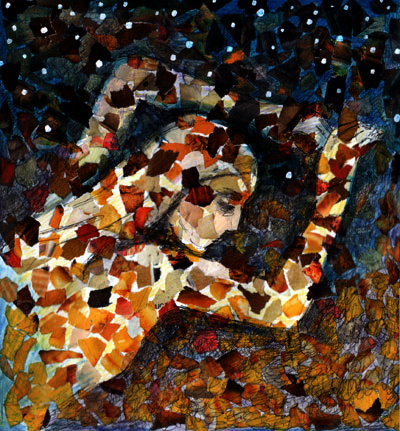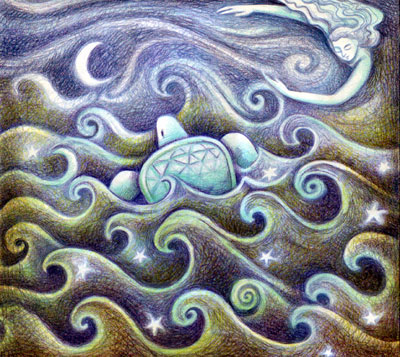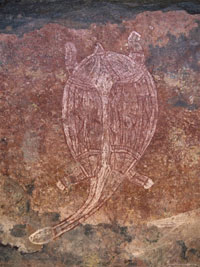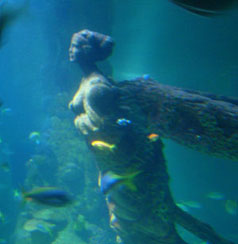
I really wanted to get a post out before Christmas and I’ve just managed to finish a drawing today, Christmas Day, pausing now and then to prepare the nutroast.
I would love to wish all my visitors and followers a very Happy Christmas!

I really wanted to get a post out before Christmas and I’ve just managed to finish a drawing today, Christmas Day, pausing now and then to prepare the nutroast.
I would love to wish all my visitors and followers a very Happy Christmas!



I believe, sometimes, that the ultimate is to dance.
I didn’t realise I liked ballet so much until I stumbled upon a youtube video of Polina Semionova dancing when I was looking randomly for dance videos. It entranced me so much I had to keep playing it over and over again. I’ve been a fan of Sylvie Guillem and seen Carlos Acosta, but I’m not normally a fan of traditional ballet – it seems so unnatural to be up on pointe. I’ve changed my mind now, I’m a fan, so I’m posting this youtube video and have used it to make some sketches that I did on old newspaper. I like the texture created by the newsprint and the way that it looks transitory and transparent. But I know I haven’t done Polina justice!


I’ve been illustrating more myths, inspired this time by ruins I visited when on holiday back in September.
The ruins of Letoon are near Patara in the Lycian region of Turkey. I’ve been meaning to write about the ruins for sometime as I really like the mythology associated with them. This is the story:
Letoon was the holy sanctuary of the goddess Leto and her two children, Apollo and Artemis. In Greek mythology, Leto was the lover of Zeus, who abandoned her and left her to wander, pregnant, in search of a secure home. She was thirsty and came to a Spring at nearby Xanthus but as she tried to take a drink some shepherds chased her away. In revenge, the goddess turned them into frogs.
The ruins chime with the story. They are partially submerged with pools that teem with frogs, dragonflies, terrapins and pond weed. When I wandered close to the edge the water became alive with movement. There is something romantic about the place with its temples, inscriptions, water and wildlife. And the frogs are a reminder of Leto’s myth.
I’m still intrigued by the ‘underwater world’. My illustration is somewhat dark and I hesitated over whether to post it, but thought I’d just go ahead anyway. It features Leto, frogs and ‘frogmen’. My ‘shepherds-turned-into-frogs’ are somewhat comic, I couldn’t help thinking of them in terms of cartoon alien creatures in jumper suits! But, apart from that, the imagery I have done reminds me of the ballet, ‘Garden of Earthly Delights’ that I saw years ago performed by Rambert Dance Company.
I looked into the mythology and symbolism of frogs. In many religions around the world they are important symbols of transformation and fertility. In Egypt they were associated with the goddess of fertility and childbirth. This may have been because of the appearance of many frogs with the flooding of the Nile, considered omens of fruitfulness. In some cultures they symbolise cleansing and healing because of their association with rain and water.
It is interesting to read about frogs as Totem animals by the artist Ravenari. Check out her lovely artwork too.
To me, frogs are symbols of the link between the conscious and unconsious because of their life both in and out of water and their need for water. I shall explore more amphibious creature myths another time. But here is a link to a poem, “Ode to Drowning” by Tishani Doshi that I think is very beautiful.

Here’s a beautiful poem I was inspired to illustrate with mixed media:
Sleeping in the Forest
I thought the earth remembered me,
she took me back so tenderly,
arranging her dark skirts, her pockets
full of lichens and seeds.
I slept as never before, a stone on the river bed,
nothing between me and the white fire of the stars
but my thoughts, and they floated light as moths
among the branches of the perfect trees.
All night I heard the small kingdoms
breathing around me, the insects,
and the birds who do their work in the darkness.
All night I rose and fell, as if in water,
grappling with a luminous doom. By morning
I had vanished at least a dozen times
into something better.from Sleeping In The Forest by Mary Oliver

 I’ve continued with the idea of a cave garden. It doesn’t make much sense having a garden in a cave where there’s no light, its as crazy as carpeting pavements. Still, I decided to create cave garden pages in my altered book and found some grass specimens in one of my collections; barren brome, wild oat grass and the ‘clapping hands’ of couch grass decorate the pages. I liked the idea of being in a garden inside a cave and looking out at a landscape and sunset. The page is really just a rough start but I thought I’d display it anyway.
I’ve continued with the idea of a cave garden. It doesn’t make much sense having a garden in a cave where there’s no light, its as crazy as carpeting pavements. Still, I decided to create cave garden pages in my altered book and found some grass specimens in one of my collections; barren brome, wild oat grass and the ‘clapping hands’ of couch grass decorate the pages. I liked the idea of being in a garden inside a cave and looking out at a landscape and sunset. The page is really just a rough start but I thought I’d display it anyway.
I haven’t got around to visiting a garden yet although I have in mind a place called ‘The Breathing Space’ where a friend has created a willow dome and made it a place for people to go to meditate and enjoy nature. You can see her blog here. Instead I stayed in and worked on a few illustrations on the garden theme. Here is one of them called ‘In the Night Garden’. I’m aware of the children’s television programme of that title, but I don’t care!




Days ago I imagined I was in a garden. Usually I like wild places but I definitely yearned for a garden of stillness and contemplation. I let the day dream unfold and take me to a cave, a cave garden, in which to meditate. Walking back with the shopping, my thoughts were adrift in powder blue, and I was surrounded by cave drawings of sea creatures, birds and flowers. Peaceful, it reminded me of a painting of Radha and Krishna in the Grove as can be seen here.
I need to find a garden.
The opalite light breaks into brightness. It has been glorious for days, but somehow too bright, too blazing. Its starkness has made me want to turn away and hide. I’ve felt inspired to draw and made this sketch that I’ve called “Woman Shunning the Light”.
I have now added the picture to my ‘altered book’.
She has the face that so often crops up in my pictures. It isn’t my face but the face of an unknown, mystrey woman that looks similar to the Buddha’s head in this photo taken in Ayutthaya in Thailand. She has appeared in my “Woman with Candle” painting, taking light from a dying sun to carry with her into the night. (I have altered the colours of the painting in photoshop to make it bluer – you can see the original on my website paintings page here.) It has an Edvard Munch/Van Gogh inspired sky.
I stumbled upon a passage by Bill Plotkin from his book ‘Soulcraft’ which makes me think about the light and the dark:
People who live excessively upperworld lives take a transcendental view of everything. They tend to see light, love, unity and peace everywhere. They are attracted to the Course in Miracles or aspire to, “enlightenment,” via an ungrounded approach to Buddhism….
…People who live excessively underworld lives see the world darkly. They tend to see hidden meaning, mystery, and the undoing of things everywhere. They gravitate toward the occult and the paradoxical. They want to penetrate to the center of everything and understand it all by standing under….
A holistic approach to spirituality interweaves the ascent and the descent, rendering balance to the experience of both the upperworld and the underworld.
You can read more of the passage here.
I’ve been wanting to photograph the elusive and fleeting wildlife encounters I’ve experienced recently around town — the sparrowhawk that flew straight across the road in front of me making a peeping noise and with a starling or blackbird in its talons. Or the fox which slunk past me on the pavement within a metre the other day, or the one glimpsed crossing the road and disappearing over a garden wall as we were returned from a walk on Hollyberry Hill Fort. My photo of him was too poor to show here, but I’m going to try and feature an urban wildlife photo each week from now on. That could be a challenge.

Last night I had a dream. I went into a room that was my room in the house I grew up in. The room was dimly lit but I could see that there were pictures, photos and shapes of birds all around the room. In the dream I was studying nocturnal bird migration. When I woke up I wrote it down and felt inspired to do a sketchy picture of migrating birds. I had distinctly seen swallows in my dream, but they’re more like starlings in my picture. The sky is overcast, not quite like the lovely sunny weather we’ve been having! Still, it’s been a bit dull today and I’ve been wrapped up with a cold — just like autumn! I need to do something colourful to welcome the better weather!

 Here are a couple of illustrations I’ve done for my story idea:
Here are a couple of illustrations I’ve done for my story idea:
 I’ve been trying to continue with my children’s story. I know that I want it to about turtles and a girl named Christine, who lives on a cliff overlooking the sea. I’ve been thinking a lot about turtles in the last few days and remembered a dream I had last year that involved my sister nurturing a wounded turtle. I looked up turtle symbolism in dreams and here are some examples of meanings I found:
I’ve been trying to continue with my children’s story. I know that I want it to about turtles and a girl named Christine, who lives on a cliff overlooking the sea. I’ve been thinking a lot about turtles in the last few days and remembered a dream I had last year that involved my sister nurturing a wounded turtle. I looked up turtle symbolism in dreams and here are some examples of meanings I found:
Longevity, patience and persistence, self-protection, hiding, withdrawing and fear of social interaction or showing one’s true self.
Turtles convey steadfastness and caution, moving and changing slowly and they have strong protective shells, which may also be symbolic of a defense mechanism or real life protection with which one has surrounded oneself.
Oh well, perhaps my dream meant that I just needed to nurture wounded parts of myself.
Turtles are often depicted in popular culture as easygoing, patient, and wise creatures and are an emblem of longevity and stability in many cultures. In some creation myths the turtle or tortoise carries the world on its back or supports the heavens. In Aboriginal rock art in the ancient turtle totem, the dome-like curved shell symbolizes the sky in relation to the square flat underside, symbolic of the earth. More turtle symbolism can be found here.
 Whilst looking up turtle myth, the story that I found most interesting and evocative was ‘The Churning of the Ocean of Milk’, a famous episode in a Hindu text, the Puranas. It involved a mountain entwined by a serpent whose head was held by demons and whose tail was pulled by the gods to rotate the mountain and so churn the ocean. All this was done to retrieve the “Nectar of Immortality” from the ocean. However, once the mountain was placed on the ocean, it began to sink, so Vishnu in the form of a turtle Kurma, came to the rescue and supported the mountain on his back. This bas relief is at Angkor Watt in Cambodia. I failed to see it when I was there (to my annoyance now), but I think its beautiful and I especially like the ghostly white turtle form at the bottom.
Whilst looking up turtle myth, the story that I found most interesting and evocative was ‘The Churning of the Ocean of Milk’, a famous episode in a Hindu text, the Puranas. It involved a mountain entwined by a serpent whose head was held by demons and whose tail was pulled by the gods to rotate the mountain and so churn the ocean. All this was done to retrieve the “Nectar of Immortality” from the ocean. However, once the mountain was placed on the ocean, it began to sink, so Vishnu in the form of a turtle Kurma, came to the rescue and supported the mountain on his back. This bas relief is at Angkor Watt in Cambodia. I failed to see it when I was there (to my annoyance now), but I think its beautiful and I especially like the ghostly white turtle form at the bottom.
A few years ago I volunteered with the Sea Turtle Protection Society, Archelon on Crete, patrolling beaches to protect breeding turtles and their eggs. I longed to get just a glimpse of a turtle or turtle track, but unfortunately they arrived the day after I left.
Anyway, with my interest in turtles returned, I wanted to see one somehow.


So yesterday I visited the Sealife centre here in Brighton to do some “research” and commune with these creatures even if it was from just behind glass! Here are some photos that will help me with my story: